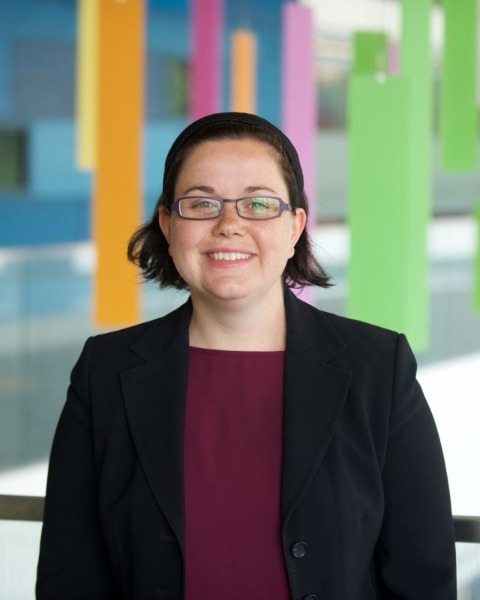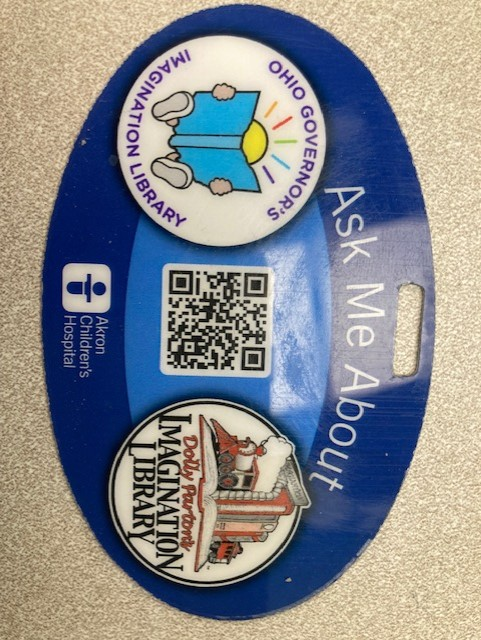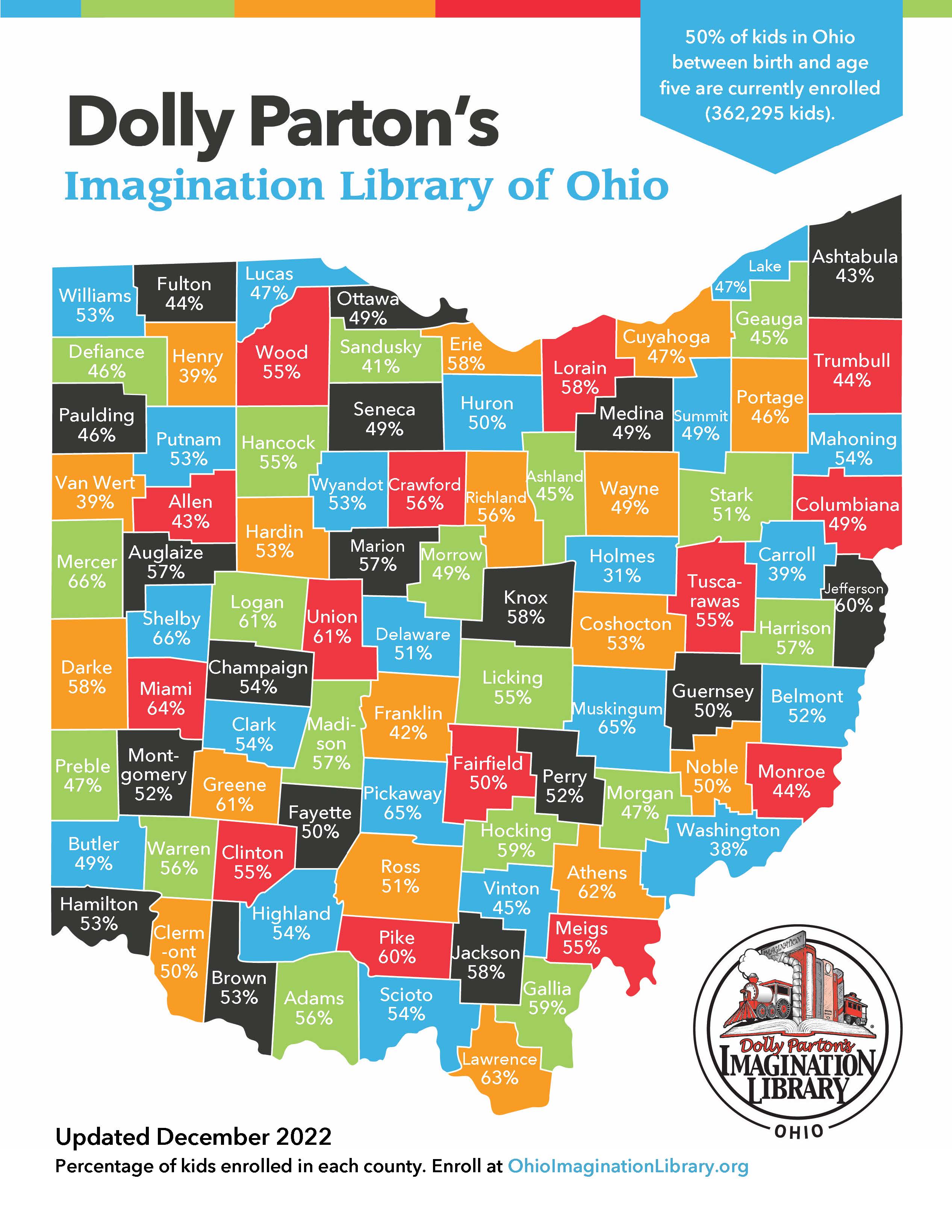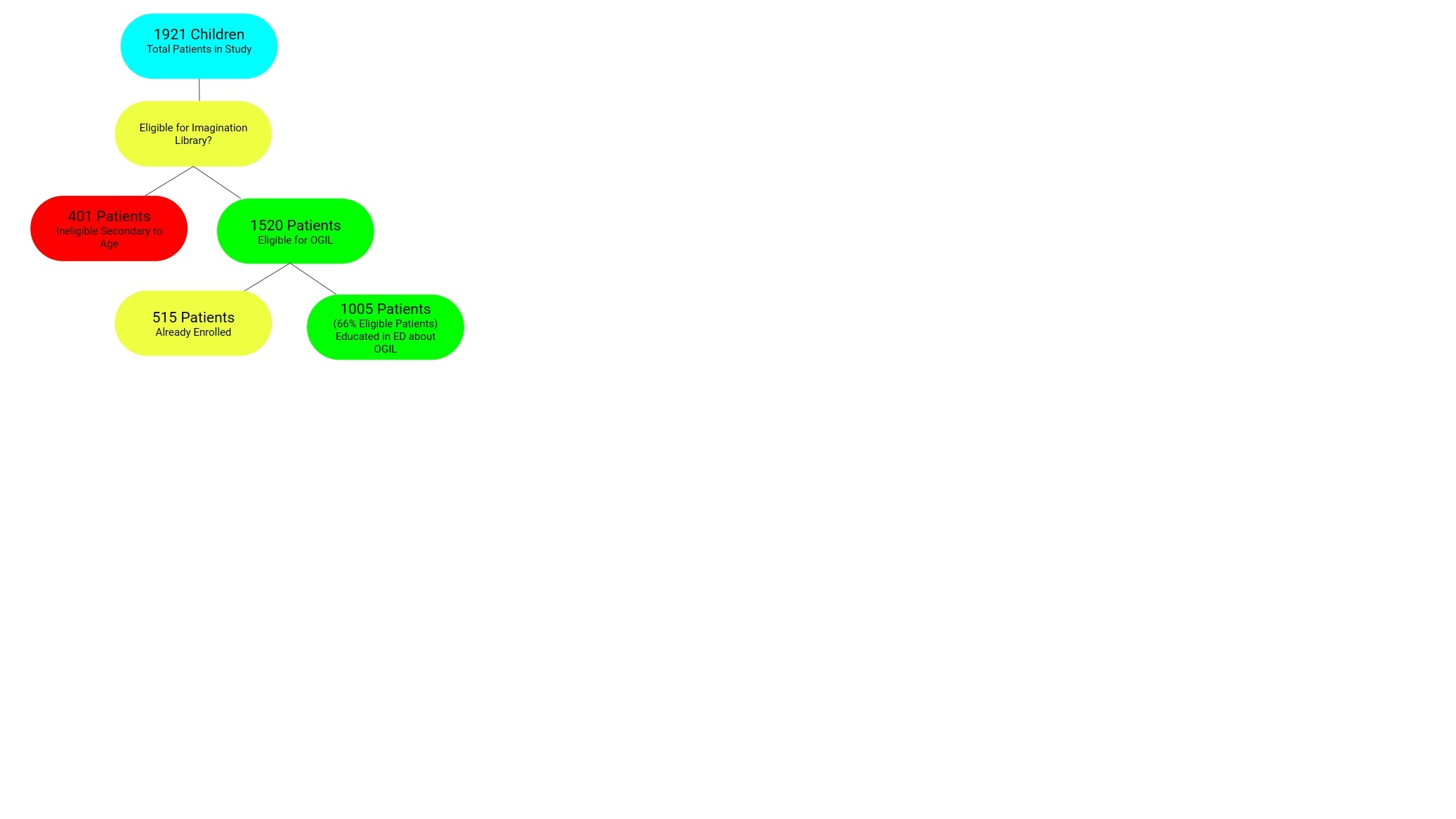Emergency Medicine: All Areas
Emergency Medicine 14
373 - Carpe Diem: ED-Based Enrollment in Imagination Library Literacy Program
Publication Number: 373.405

Anya Kleinman, MD, IBCLC (she/her/hers)
Academic Pediatrician
Akron Children's Hospital
Cleveland, Ohio, United States
Presenting Author(s)
Background:
Dolly Parton's Imagination Library gives children under 5 years high-quality books monthly. Since it started in 1995, it has mailed millions of books to children in the U.S and across the world with demonstrated benefits for improvement in early childhood literacy for participating children. In 2020, Governor Mike DeWine finalized the statewide expansion of the “Ohio Governor’s Imagination Library” (OGIL). At program launch, it was estimated that only 34% of eligible children in Ohio were enrolled in the free program. By December 2022, over 50% of eligible children in Ohio, a total of 362,292 children, were enrolled. Nationally, six states (AK, DE, CA, KY, OH, and OK) currently offer statewide eligibility for the program with two additional states (ME and LA) to join in 2023. Demonstrate the feasibility of in-the-moment literacy promotion during ED visits with family recruitmentre to OGIL to increase pediatric access to books Highlight the significant gaps in knowledge about the OGIL program among our eligible ED families Our program was launched in 2020-2021 to address challenges in children’s access to books during COVID-19. We designed a novel enrollment program for OGIL based on validated recruitment techniques for voter registration. The program was based in the Akron Children’s Hospital Department of Emergency Medicine. Families were surveyed about their knowledge of OGIL and asked during their medical visit about family enrollment. Families with eligible children were directed via a QR code to enroll online while in the ED. 1,921 families were engaged in conversations about OGIL from Feb 2021-August 2022 with 79% of families containing a child eligible for the program. Of this subset, only one-third of eligible families were enrolled in the program. This percentage is much less than the general county-by-county percentages for OGIL participation, suggesting that ED patients are an under-enrolled cohort. Linking families to existing, robust community resources is sustainable and impactful. Our project to screen and enroll eligible families presenting for care in our pediatric EDs for OGIL amplified community outreach efforts. This program demonstrated that medical encounters, even in the acute care setting, can be transformed into an opportunity for literacy education and leveraged to promote essential resources to under-served populations. Furthermore, as more and more states work to expand similar programs statewide, our initiative can be spread to increase enrollment within pediatric populations seeking care in the ED.
Objective:
Design/Methods:
Results:
Conclusion(s): 


